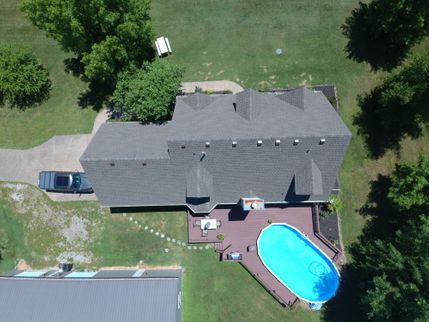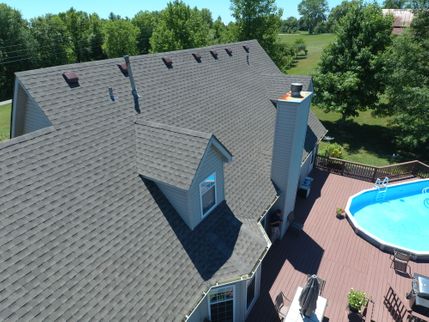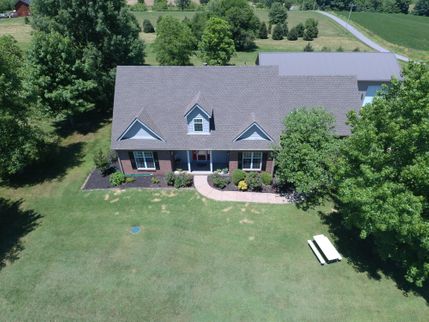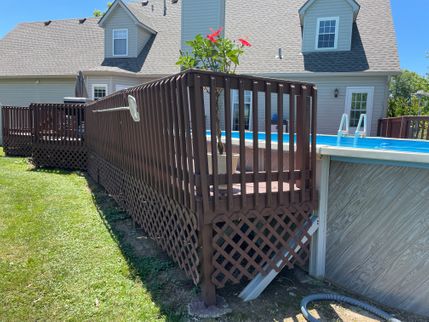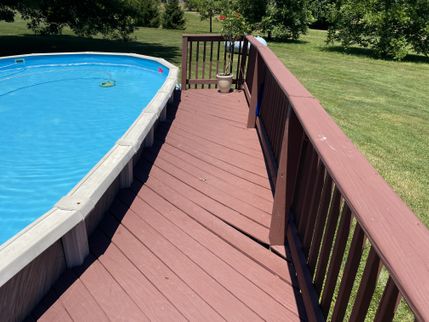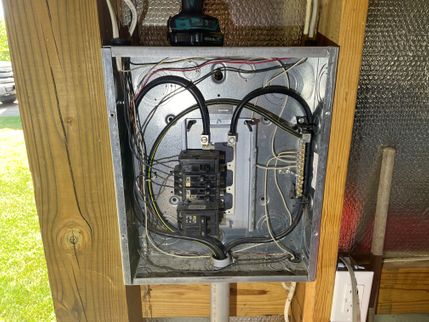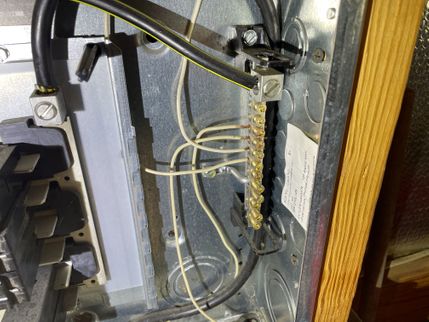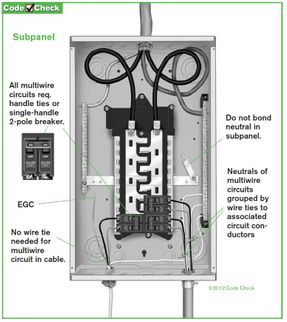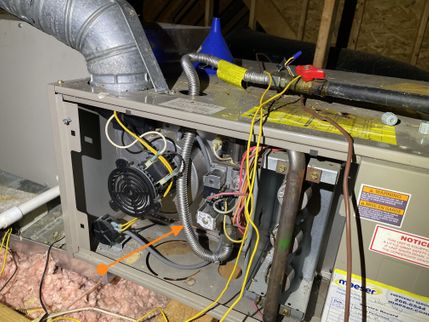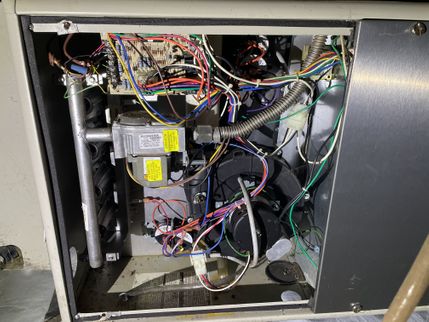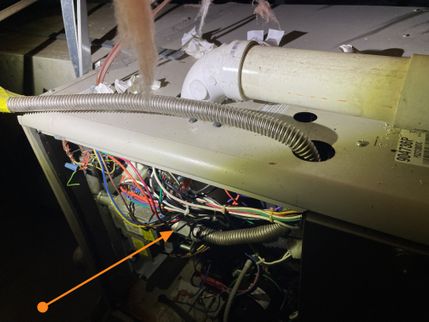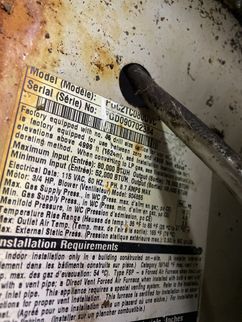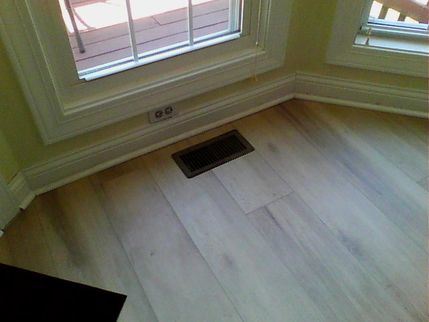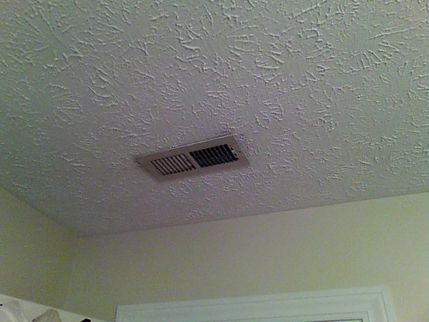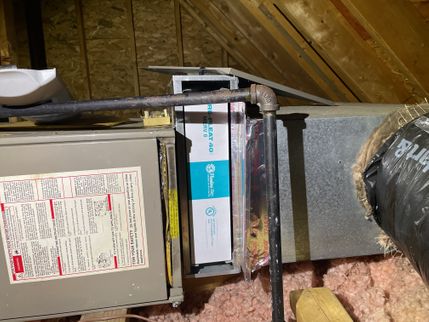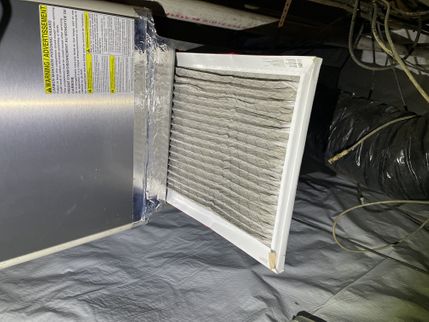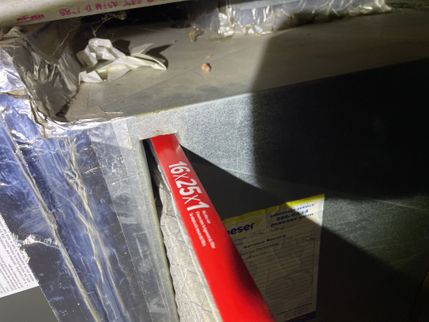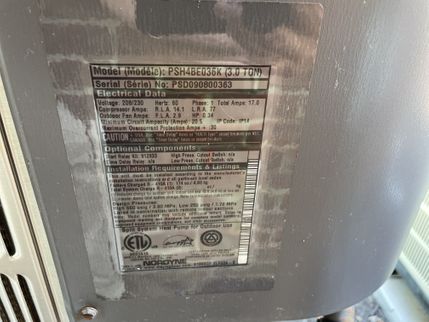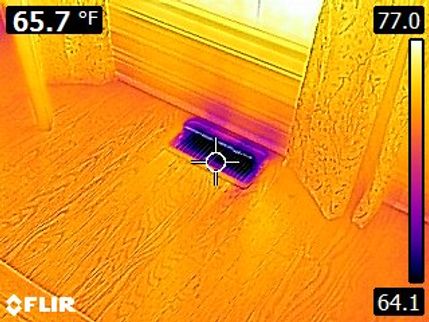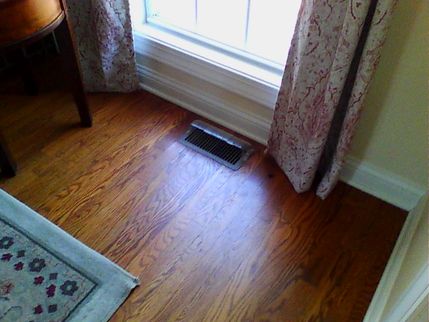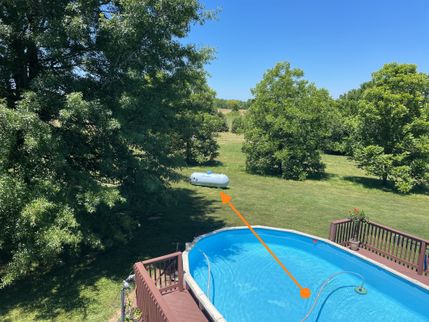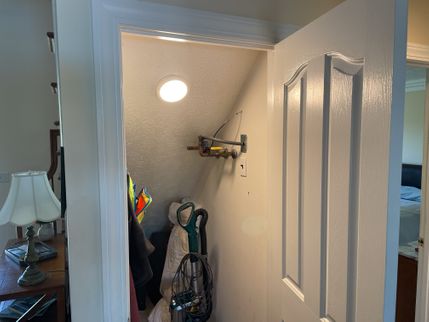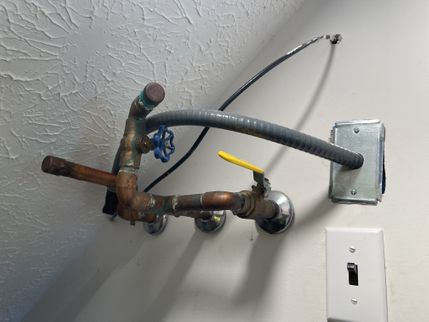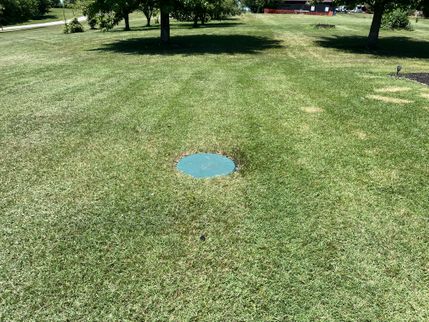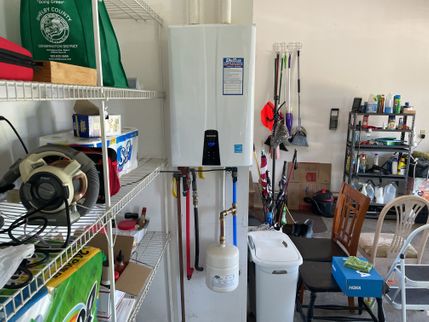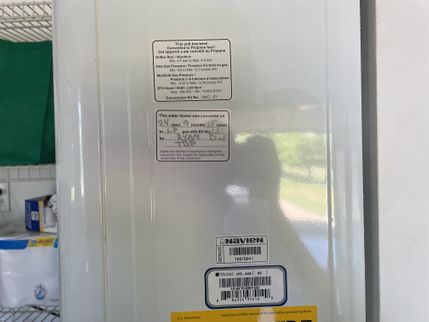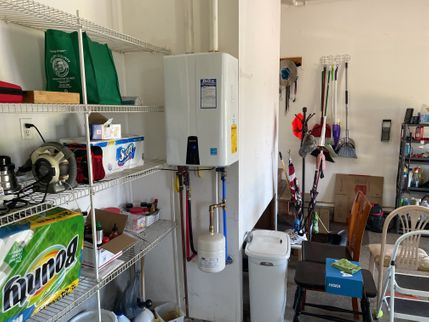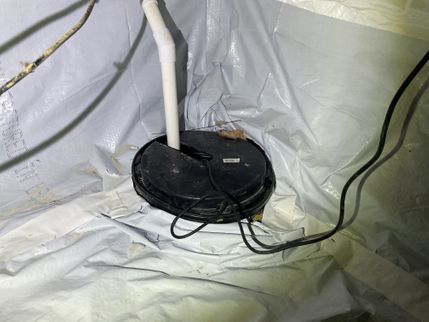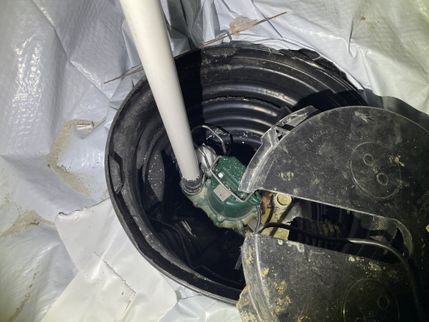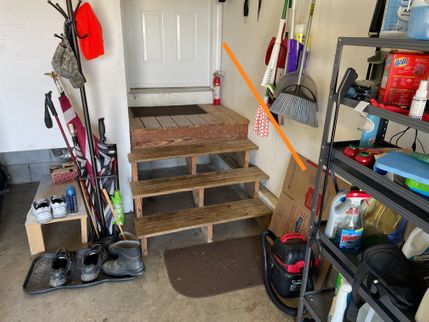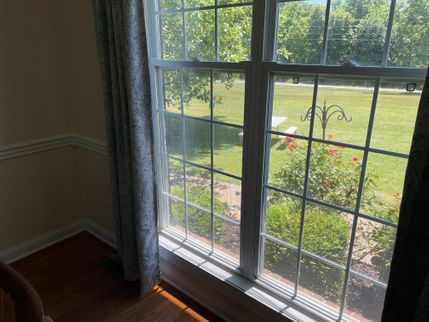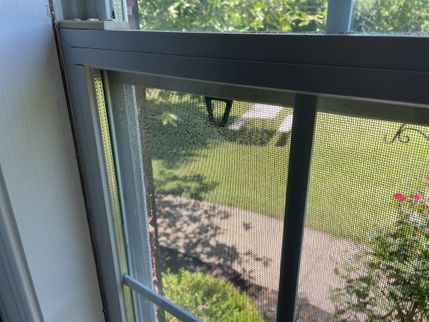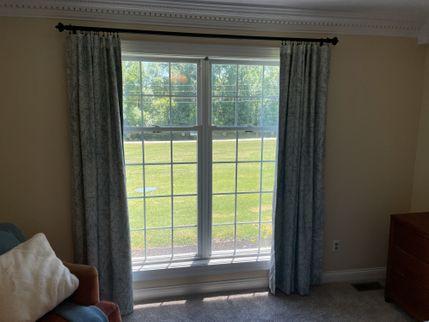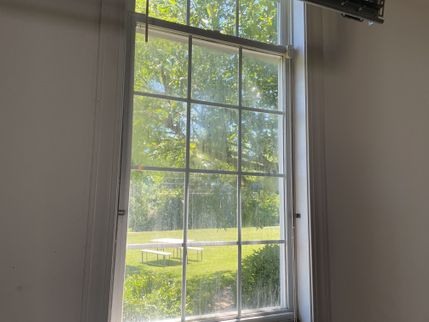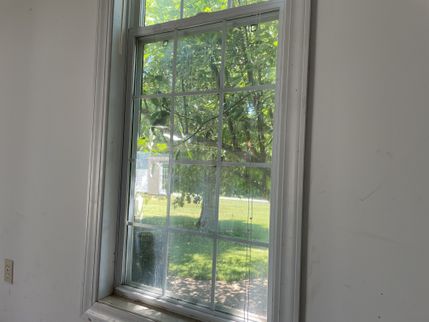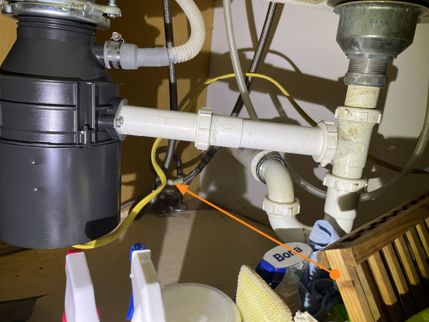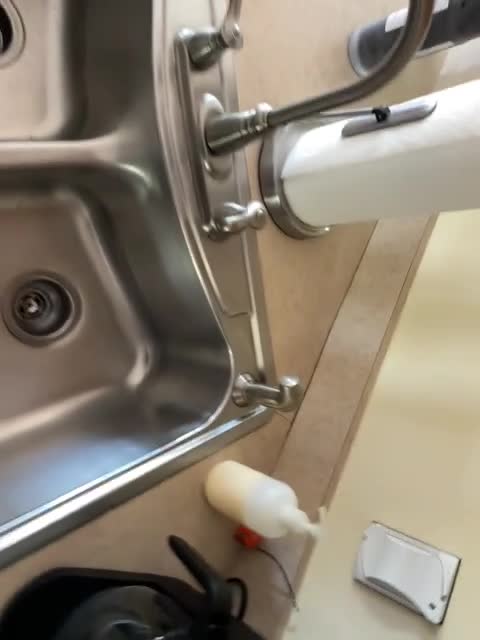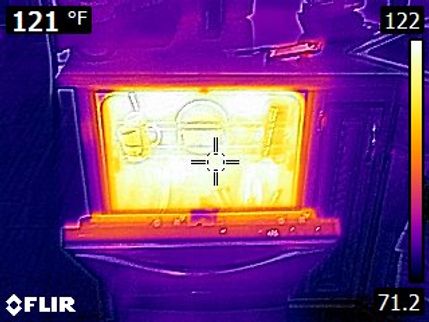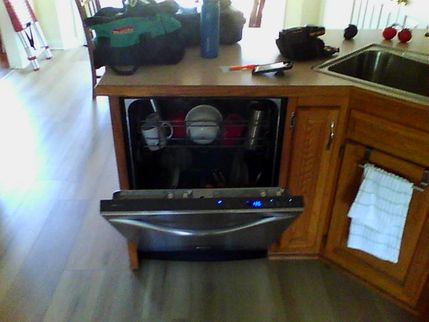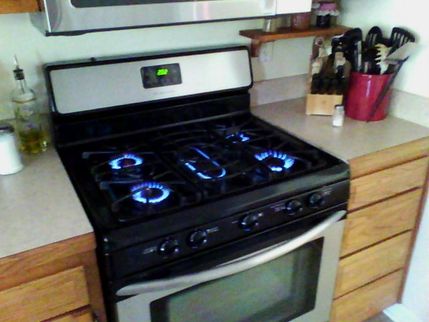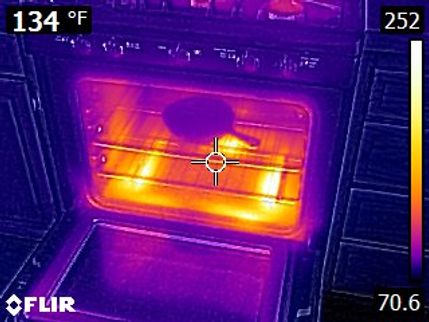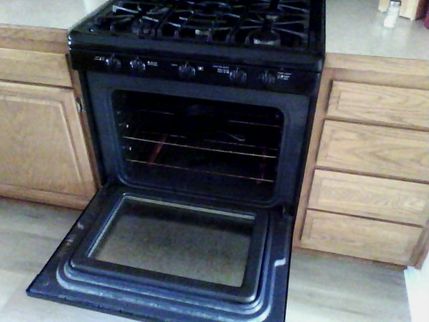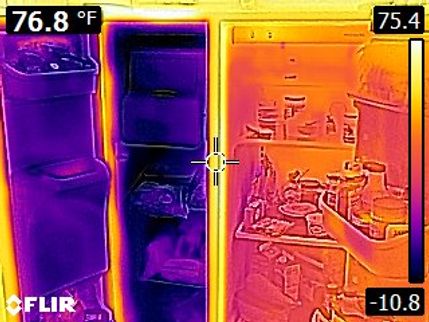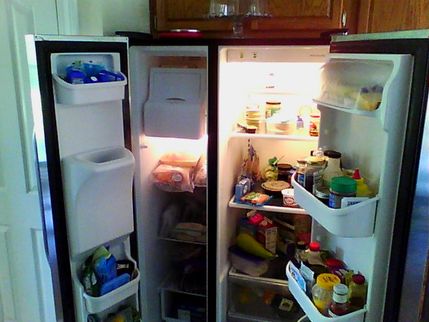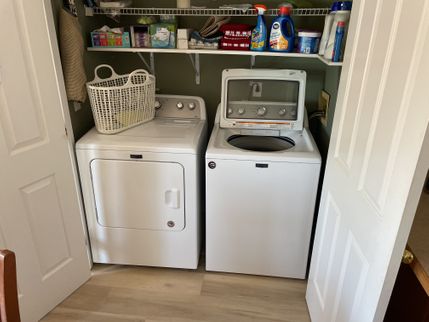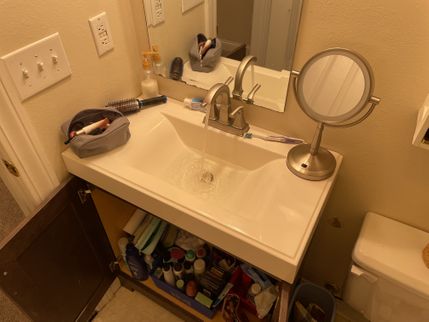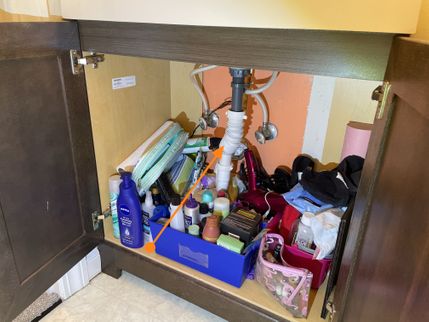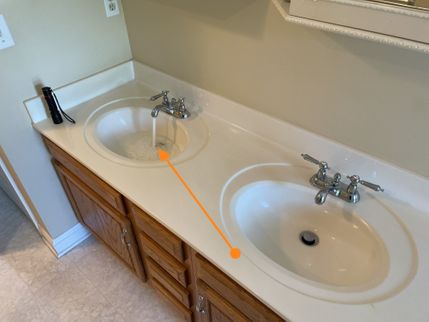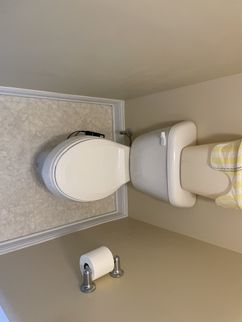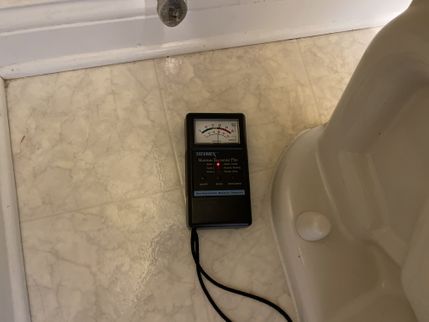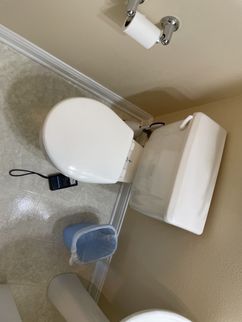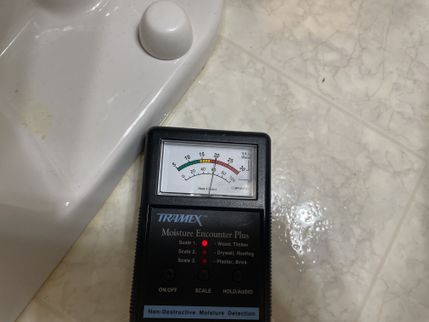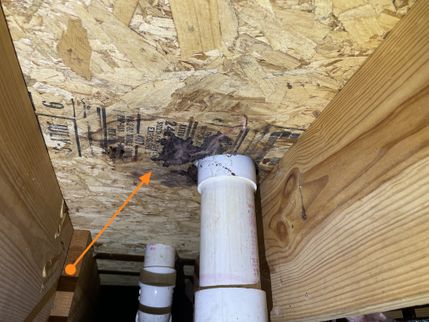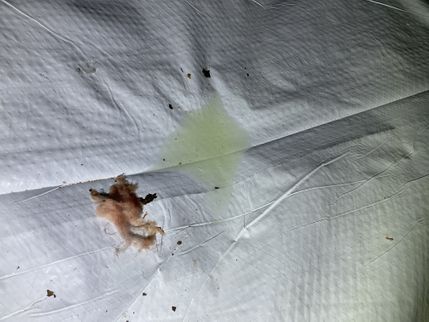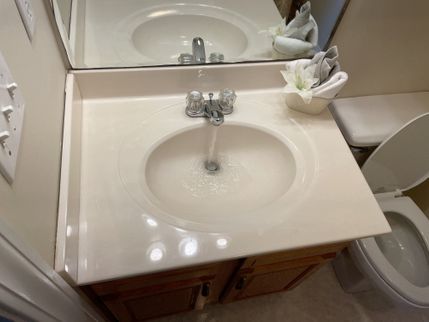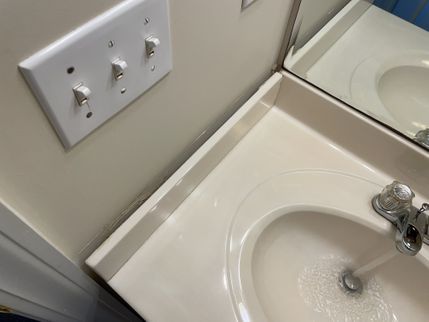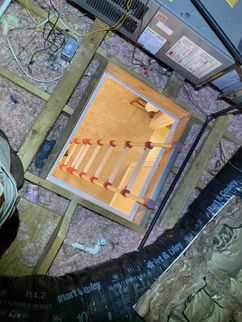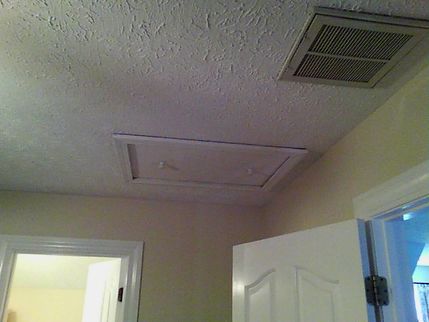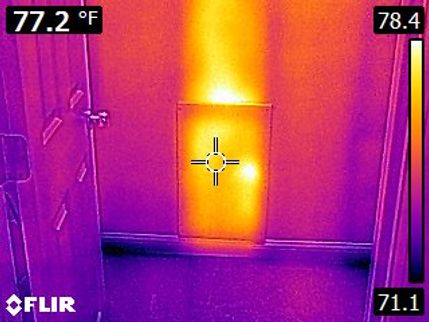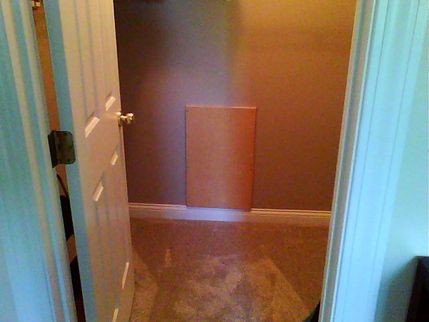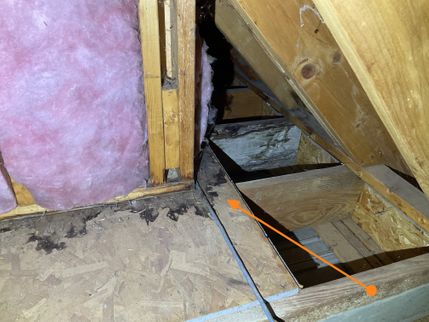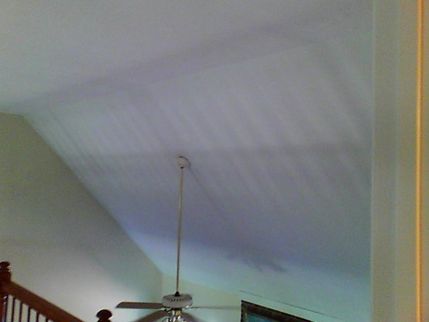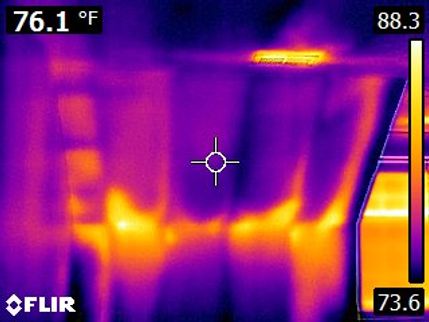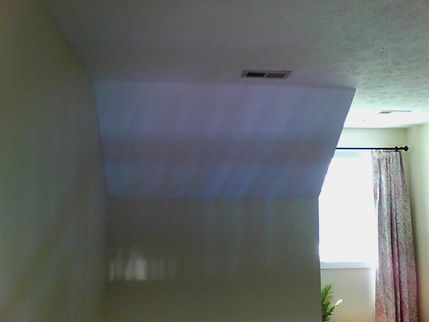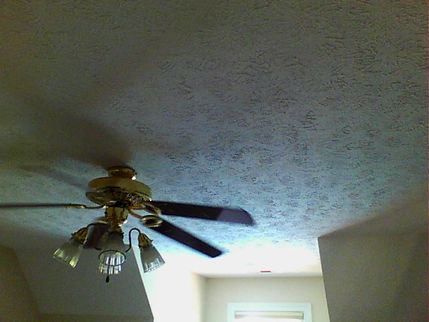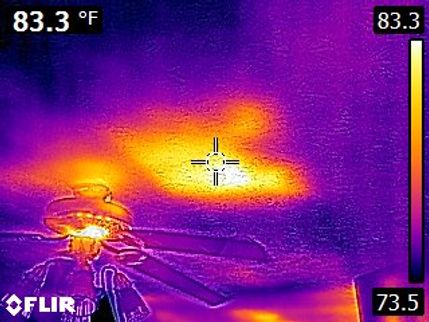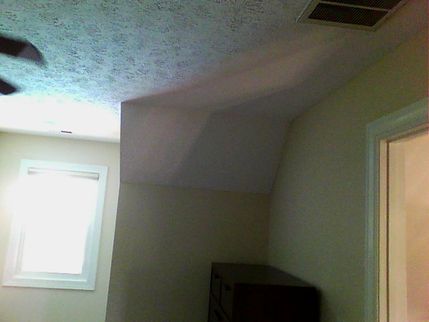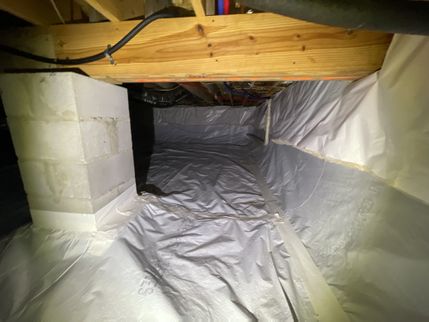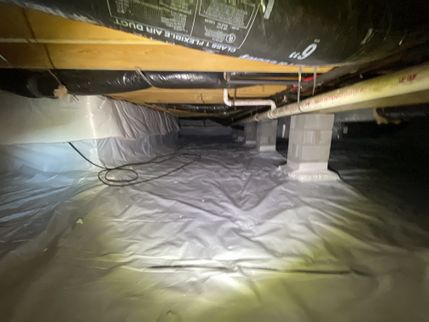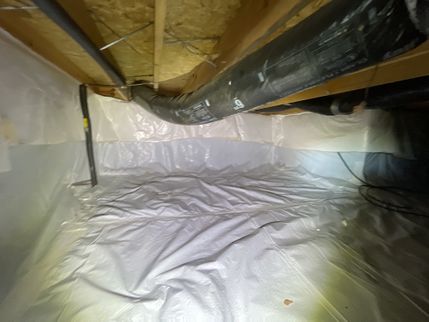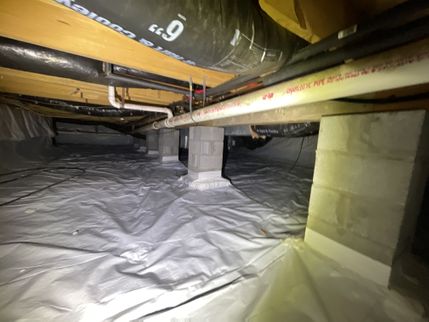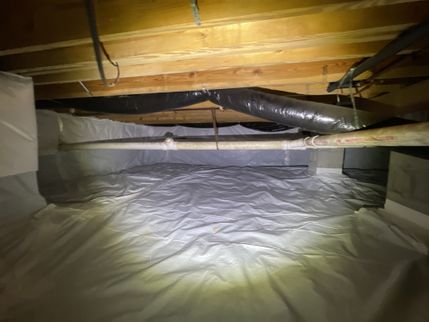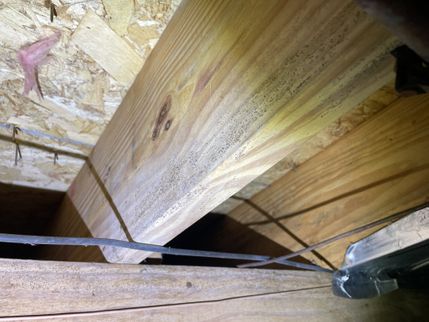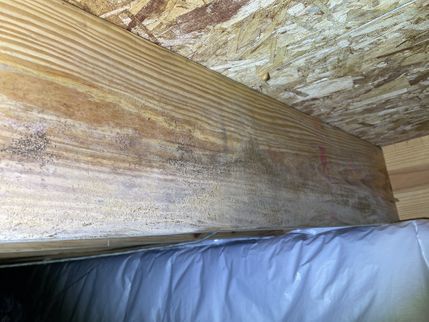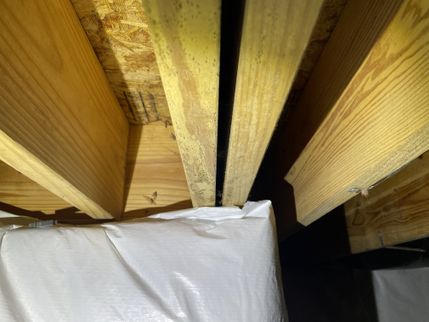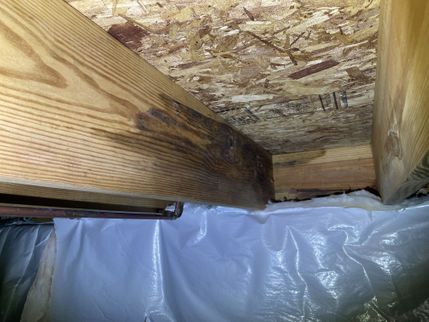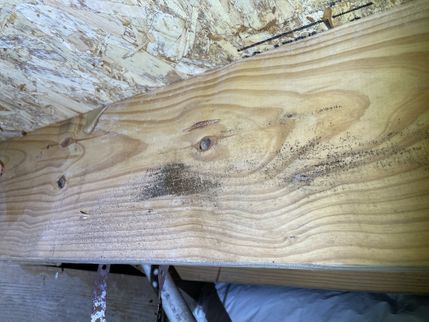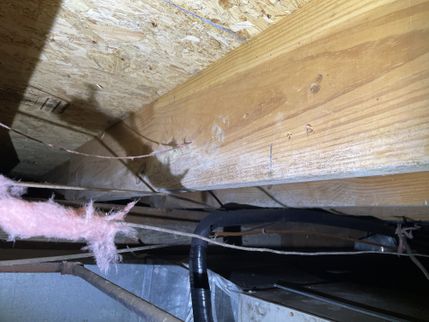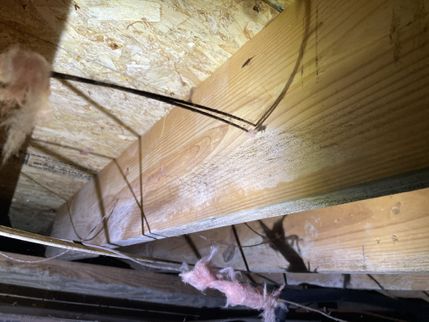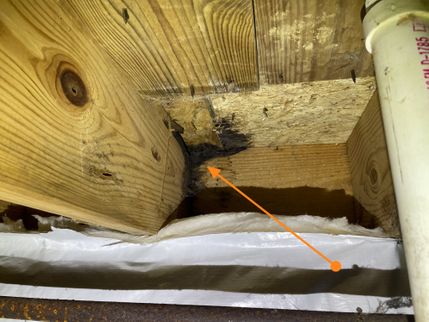The Scope and Purpose of a Home Inspection
Purchasing property involves risk
The purpose of a home inspection is to help reduce the risk associated with the purchase of a structure by providing a professional opinion about the overall condition of the structure. A home inspection is a limited visual inspection and it cannot eliminate this risk. Some homes present more risks than others. We cannot control this, but we try to help educate you about what we don’t know during the inspection process. This is more difficult to convey in a report and one of many reasons why we recommend that you attend the inspection.
A home inspection is not an insurance policy
This report does not substitute for or serve as a warranty or guarantee of any kind. Home warranties can be purchased separately from insuring firms that provide this service.
A home inspection is visual and not destructive
The descriptions and observations in this report are based on a visual inspection of the structure. We inspect the aspects of the structure that can be viewed without dismantling, damaging or disfiguring the structure and without moving furniture and interior furnishings. Areas that are concealed, hidden or inaccessible to view are not covered by this inspection. Some systems cannot be tested during this inspection as testing risks damaging the building. For example, overflow drains on bathtubs are generally not tested because if they were found to be leaking they could damage the finishes below. Our procedures involve non-invasive investigation and non-destructive testing which will limit the scope of the inspection.
This is not an inspection for code compliance
This inspection and report are not intended for city / local code compliance. During the construction process structures are inspected for code compliance by municipal inspectors. Framing is open at this time and conditions can be fully viewed. Framing is not open during inspections of finished homes, and this limits the inspection. All houses fall out of code compliance shortly after they are built, as the codes continually change. National codes are augmented at least every three years for all of the varying disciplines. Municipalities can choose to adopt and phase in sections of the codes on their own timetables. There are generally no requirements to bring older homes into compliance unless substantial renovation is being done.
This is just my opinion
Construction techniques and standards vary. There is no one way to build a house or install a system in a house. The observations in this report are the opinions of the home inspector. Other inspectors and contractors are likely to have some differing opinions. You are welcome to seek opinions from other professionals.
The scope of this inspection
This inspection will include the following systems: exterior, roof, structure, drainage, foundation, attic, interior, plumbing, electrical and heating. The evaluation will be based on limited observations that are primarily visual and non-invasive. This inspection and report are not intended to be technically exhaustive.
Your expectations
The overall goal of a home inspection is to help ensure that your expectations are appropriate with the house you are proposing to buy. To this end we assist with discovery by showing and documenting observations during the home inspection. This should not be mistaken for a technically exhaustive inspection designed to uncover every defect with a building. Such inspections are available but they are generally cost-prohibitive to most homebuyers.
Your participation is requested
Your presence is requested during this inspection. A written report will not substitute for all the possible information that can be conveyed verbally by a shared visual observation of the conditions of the property.
How to Read This Report
Getting the Information to You
This report is designed to deliver important and technical information in a way that is easy for anyone to access and understand. If you are in a hurry, you can take a quick look at our "Summary Page” and quickly get critical information for important decision making. However, we strongly recommend that you take the time to read the full Report, which includes digital photographs, captions, diagrams, descriptions, videos and hot links to additional information.
The best way to get the layers of information that are presented in this report is to read your report online, which will allow you to expand your learning about your house. You will notice some words or series of words highlighted in blue and underlined – clicking on these will provide you with a link to additional information.
This report can also be printed on paper or to a PDF document.
Chapters and Sections
This report is divided into chapters that parcel the home into logical inspection components. Each chapter is broken into sections that relate to a specific system or component of the home. You can navigate between chapters with the click of a button on the left side margin.
Most sections will contain some descriptive information done in black font. Observation narrative, done in colored boxes, will be included if a system or component is found to be significantly deficient in some way or if we wish to provide helpful additional information about the system or the scope of our inspection. If a system or component of the home was deemed to be in satisfactory or serviceable condition, there may be no narrative observation comments in that section and it may simply say “tested,” or “inspected.”
Observation Labels
All narrative observations are colored, numbered and labeled to help you find, refer to, and understand the severity of the observation. Observation colors and labels used in this report are:
- Safety:I visually observed a condition in the home that may pose a safety risk or hazardous condition. These conditions should be rectified before occupying the home.
- Health & Safety:I visually observed a condition in the home that may pose a safety risk or health hazardous condition. These items & conditions should be resolved/corrected before occupying the home.
- Major Concern:Repair items that may cost significant money to correct now or in the near future, or items that require immediate attention to prevent additional damage or eliminate safety hazards.
- Repair:Repair and maintenance items noted during inspection. Please note that some repair items can be expensive to correct such as re-finishing hardwood floors, but are considered simply repair items due to their cosmetic nature.
- Improve:Observations that are not necessarily defects, but which could be improved for safety, efficiency, or reliability reasons.
- Due Diligence:Items that may require further investigation to determine the severity and / or urgency of repair.
- Completed:Items that were tested/checked and found to be in working order. No further action is needed.
- Future Project:A repair that may be deferred for some time but should be on the radar for repair or replacement in the near future.
- Efficiency:Denotes observations that are needed to make the home more energy efficient as well as to bring the home up to modern insulation standards. This category typically includes windows and insulation. Other items, such as lighting and appliances, are not inspected for their energy status.
- Note:Refers to aside information and /or any comments elaborating on descriptions of systems in the home or limitations to the home inspection.
Who Repairs the Items Found in this Report
As I don't know the qualifications of the seller or the buyer to conduct repairs, I always recommend that you consult a qualified licensed professional in the appropriate trade to determine all needed repairs and best repair method, to estimate costs, and to perform all repairs deemed necessary. That's what I mean when I write "Repair as necessary", "Fix it" or ANY other terms implying the need for repair/replacement.
You need to decide for yourself if you or the seller's qualifications, experience and knowledge would allow the repair to be made without using a qualified licensed trade professional.
Summary Page
The Summary Page is designed as a bulleted overview of all the observations noted during inspection. This helpful overview is not a substitution for reading the entire inspection report. The entire report must be read to get a complete understanding of this inspection report as the Summary Page does not include photographs or photo captions.
Report Summary
Safety
- I5-1 🔑 Interior:
The steps leading in from the garage need a handrail installed for your safety.
- K-1 🔪 Kitchen:
The electrical cable feeding power to the garbage disposal should be in conduit for safety. You don't want electrical lines exposed where people can grab them or they can be damaged by someone. Have an electrician evaluate the situation and repair the power cable for the disposer as they see fit.
Health & Safety
- HCFV1-2 🔥 Heating, Cooling, Fireplaces and Ventilation:
The gas furnaces are being fed by a flexible appliance connection that is inside the unit's cabinet (both units- crawlspace and attic). You never want to use this type of connection inside the furnace cabinet as the vibration could wear a hole in the flex line, creating a gas leak.
Replace the flex line with a rigid pipe until it passes through the cabinet and then the flexible connector can be used.
- CS-2 🐌 Crawl Space:
What may be mold or mildew or some kind of fungal growth is present on some of the structural wood in the crawl space. It may be in other areas also. I don't know. The identification of the substances and characterization of a health hazard are beyond the scope of this home inspection.
Mold, mildew, fungus and other organisms commonly occur in areas that show evidence of, or have the potential for, leaking, moisture intrusion and/or inadequate ventilation. Any area or item exhibiting such conditions can be a health hazard to some people. Only lab testing can positively identify the growth or if will be harmful to you or your family.
My basic recommendation is: The moisture source needs to be controlled and the growth might need to be cleaned up (depending on what it is). There are specialists, such as industrial hygienists, who can help create an action plan for you to take care of the issue.
- RGT2-1 ☢ Radon Gas Testing:
A Radon gas test was not performed on the home. Most of central Kentucky is Zone-1 rated by the EPA, which puts us in the highest risk category for Radon gas exposure. I do encourage you to have a Radon test performed for your safety. To learn more about radon exposure, and how the testing process works you can visit the EPAs website here; https://www.epa.gov/radon
I have also written several articles on Radon testing that you can read here: Radon Testing Information
Major Concerns
- ES-1 ⚡ Electric Service:
There has been a fire/burn event inside the panel. Have an electrician perform a full evaluation on the panel and see if it needs to be replaced. Note- You may find there is more damage under other breakers that we can't see currently, so be sure you have this done ASAP.
Repairs
- G1-1 🌳 Grounds:
The driveway has cracked and settled in many locations. It is especially bad along the right-hand side. With so much deterioration you will likely need to have this replaced. Have a concrete contractor evaluate the situation and give you some idea of the cost and scope of the repairs.
- G1-2 🌳 Grounds:
The tree limbs need to be trimmed back from the house/roofline. If vegetation is allowed to touch the house or sway against the roof it can and usually does lead to damage.
Have the limbs trimmed back and repair any damaged siding/shingles you find once they are out of the way.
- RCG-1 🏡 Roof, Chimney and Gutters:
The roof/wall connection (at the chimney sides) is missing a kickout flashing. Kickout flashings are used where a lower roofline terminates against a vertical wall. The kickout is installed above the gutter and/or drip edge flashing where the roof meets a vertical wall. It kicks out rainwater and diverts it away from the lower wall. Without a kickout flashing, the water misses the gutter and runs in behind the siding, and gets trapped inside the wall, causing things to rot out over time.
The dirt trail that leads down below the gutter is a sign that the water is washing down the siding. You'll need to have the vinyl lifted up in this area to check for damage. It's common for the walls of the chimney to suffer water damage from this. Have a qualified roofer install the proper flashing and repair the damage that is already present. I have written a detailed article on the matter you can read here: Kickout Flashing
*Unfortunately, many roofers do not know what a kickout flashing is, and you may have trouble finding someone who can repair this properly. Here is a link to an article from Fine Homebuilding that shows what a kickout flashing is, and how it's installed. Kickout Install
- DPB5-1 🏡Decks, Porches and Balconies:
The deck around the swimming pool is leaning along the right side. There’s no access to get under the deck so I’m not sure what has caused this movement. Have a contractor investigate and repair the situation as needed.
- ES-2 ⚡ Electric Service:
Currently, all sub-panels are required to be fed with four wires (two hots, a neutral, and a ground). The sub-panel here appears to be a three-wire feed.
A new four-wire feed to the sub-panel should be installed for improved safety. I recommend further evaluation and repair by a licensed electrical contractor. On sub-panels it is important that neutrals and equipment grounds be separated to control stray voltage. To accomplish this, you generally need a four-wire feed. There are some cases where three-wire feeds can be used for outbuildings, but never when the sub-panel is located within the same structure.
- P-1 🚿 Plumbing:
The main water shut-off is in the closet under the steps that lead upstairs. This looks to be where the water heater was originally installed but it has been relocated.
The main shut-off valve is the yellow-handled ball valve in the closet.
Note: It’s a good idea to have the electrical wire properly removed from the wall to prevent someone from touching it.
- P-3 🚿 Plumbing:
There is an open drain in the crawlspace that doesn't look like it was ever connected to anything. I have no idea why this is here. Have a plumber investigate and remove the drain as needed.
- P-5 🚿 Plumbing:
The tankless water heater installed in the garage should be flushed yearly (sometimes twice a year depending on how hard your water is) to keep things running smoothly. If this is not done it can void your warranty on the unit. Here is a link to a video explaining this process. https://www.youtube.com/watch?v=8-ts7XuvS48 You'll want to contact a plumber and make sure this gets done as needed.
If this has not been done since the unit was installed you may already have some damage to the heat exchanger. Be sure and have your plumber evaluate the situation and repair it as needed.
- I5-2 🔑 Interior:
Most of the windows have what appears to be a Low-E coating failure between the layers of glass. As far as I know, there is nothing you can do to correct this short of replacing the window.
Most window manufacturers do warranty against this type of failure, so check with the seller about who the manufacturer is so you can inquire about having the windows replaced.
- K-2 🔪 Kitchen:
The disposer did come on when tested, but it is very loud. It sounds like the bearings in the unit are going out. Replace as needed.
- FB-1 🛁 Family Bathroom:
A slow drain was noted at the family bathroom sink indicating that the drain may be obstructed. Repair as needed so the drain keeps up with the fixture supply. This typically involves cleaning out the trap.
- FB-2 🛁 Family Bathroom:
The flexible drain lines that are installed may cause the sinks to drain slowly or clog easily. The ridges in the flexible part of the pipe trap cause gunk to build up over time. I recommend you have the drains replaced with smooth rigid PVC pipe. These flex lines are typically used by homeowner/DIY remodels that don't know how to install a proper PVC sink trap.
- MB-1 🚻 Main Bathroom:
A slow drain was noted at the left side master bathroom sink indicating that the drain may be obstructed. Repair as needed so the drain keeps up with the fixture supply. This typically involves cleaning out the trap.
- MB-2 🚻 Main Bathroom:
The sub-floor around the toilets is scanning wet with a moisture meter. This is usually caused by a leaking wax ring that allows the moisture to seep out under the linoleum. I can see the damaged sub-floor from the crawlspace side as well so I would think you'll need to have the floor cut out and replaced from up top to properly repair this situation.
- MB-3 🚻 Main Bathroom:
The master shower is leaking in the crawlspace. There is a small puddle of water under the drain connection. Have a plumber investigate and repair as needed.
- GB-1 👨👦👦 Guest Bathroom:
The vanity top in the upper-level guest bathroom is not secured to the cabinet base. Have a contractor repair as needed.
- A2-1 🗼 Attic:
The attic access hatch cover is not air sealed and doesn't have any insulation on its backside. Areas like these can be a big ding to the efficiency of the home. You'll want to have the hatch sealed with weather stripping, and have ridged insulation placed on the back of the sheet goods that cover the hole. I've written a how-to guide on this subject that you can read here: http://abihomeservices.com/insulating-your-attic-access-hole/
- A2-2 🗼 Attic:
There are water stains along the back of the interior wall in the small attic access. I do not know if this is a current leak or not due to the lack of recent rainfall.
Have a roofing contractor evaluate the situation to see if this is current or old damage that was never properly repaired. Follow their advice and correct the situation as needed.
- SB-1 🏠 Structure and Basement:
There is a section of rot and water damage along the back right corner of the crawlspace. It seems the door in the master bathroom is leaking and causing the damage. Have the floor repaired as needed.
Improves
- HCFV1-6 🔥 Heating, Cooling, Fireplaces and Ventilation:
The air conditioning system struggled with keeping the home cool on a warm day when it was ~82 degrees outside. This will likely get worse when it gets really hot outside. The thermostats were set to 75 degrees when I arrived and I turned each system down to 68. After 3.5 hours, the temperature at each thermostat was roughly 73. A well-running system can normally cool a home down at a rate of about 2 degrees per hour.
Understand that while the air conditioning usually takes the blame for something like this, it is not always the culprit. Air sealing the building envelope, insulation, ductwork sealing, etc. can all play a role in this.
Speak with an HVAC contractor/building science pro and see what can be done to help improve the situation.
- A2-4 🗼 Attic:
There are several spots of thin/missing insulation that are visible under thermal imaging. Gaps and voids in your insulation coverage will cost you money and comfort 24-7-365. It's a good idea to have a contractor who utilizes thermography to help identify problem areas and correct things as needed. I've also written a DIY How-to guide on properly insulating your attic if you wish to tackle this yourself. You can read that here: https://abihomeservices.com/diy-guide-to-blown-in-attic-insulation/
Due Diligences
- GC2-1 💬 General Comments:
This home inspection is not a mold inspection of any kind. According to the EPA, mold testing/sampling is NOT needed the vast majority of the time. Here is a link to more info from the EPA on mold: EPA on mold testing.
The EPA has produced a document on mold in the home which you can download here: A Brief Guide to Mold, Moisture, and Your Home
Any mold in a house is a symptom of a moisture problem and is not the actual problem itself. If I see anything during your inspection, I will say something in this report. That is strictly a courtesy for you. If this topic concerns you, you can speak with a true mold specialist, such as an industrial hygienist, about performing a test/inspection on the home. I would be very suspicious and cautious of any "mold contractor" who has a financial interest in performing any mold testing and/or mitigation work for you.
- RCG-2 🏡 Roof, Chimney and Gutters:
The roofing material on this structure is a recently installed dimensional or architectural grade shingle. These are often rated as 30-40 year shingles.
In practice as a roof assembly, they tend to last about 25-30 years depending on the quality of the installation, the steepness of the roof, and the exposure. This installation appears neat and professional.
Inquire with the seller about any warranty information for this roof. Many professional roofing companies will offer limited workmanship warranties that may transfer over to you.
Please note that roofs are not just a shingle. They are an assembly, and require regular cleaning and maintenance to keep them performing reliably.
- EDFW1-1 ⚡ Electric Distribution and Finish Wiring:
In accordance with home inspection industry standards, I do not test smoke detectors as simply pressing the button doesn't give you any real data on how well the unit will work in a real fire. However, they are an important safety feature that must not be overlooked, and it is important to make sure that there are functional detectors installed at all required locations prior to occupying the premises. Unless the smoke detectors are newly installed I strongly encourage you to install new ones throughout the home when you move in. You can buy a 3-pack for around $30 on Amazon. Link to Smoke Detectors
- EDFW1-2 ⚡ Electric Distribution and Finish Wiring:
Carbon monoxide (CO) is a colorless, odorless, and tasteless gas that is poisonous to humans. It is known as the “silent killer” because humans cannot tell when they are around it, but it can be very dangerous and deadly if the levels get high enough.
The carbon monoxide detector is a safety device that can alert homeowners of a CO leak and help them escape a potentially life-threatening situation, like carbon monoxide poisoning.
What does a carbon monoxide detector do?
Carbon monoxide alarms detect the poisonous gas and provide early warning. In the event of a carbon monoxide leak, it is critical that you get to fresh air as soon as possible. Every second counts, and a detector can provide you and your family the advanced warning necessary to escape your home during an emergency.
What are the main sources of carbon monoxide leaks?
Carbon monoxide can be produced by any fuel-burning device. Three main sources are your home’s furnace, dryer vent in a drying machine, and fireplace or chimney. It is important to have these sources regularly serviced and cleaned by a professional to help prevent a CO leak that could lead to carbon monoxide poisoning.
Because of the seriousness of carbon monoxide risk, I encourage you to replace or install new carbon monoxide detectors in the recommended areas.
You should not leave old or currently installed carbon monoxide detectors in place. Most manufacturers list their life expectancy at about five years, and it's simply not worth the risk of leaving an old or pre-existing carbon monoxide detector in place.
There are several different types of CO detectors available. Some are hardwired like this one: Hardwired CO Monitor and some plug into a receptacle for easy installation like this one; Wall Mount CO Monitor
You can also get some units that will alert you of carbon monoxide at a much lower level then some of the cheaper models. While these more sensitive units do cost more, they will alert you to a potential issue much sooner. Low Level CO Monitor.
- HCFV1-1 🔥 Heating, Cooling, Fireplaces and Ventilation:
If you are getting 'home warranty coverage' (either buying one or the seller is providing one) it is vital you have their company's 'approved' contractor perform an inspection and service the HVAC system before they place the unit under coverage.
This will help prevent the warranty company from claiming a problem down the road was a pre-existing condition (which I'm told they are known for doing). Having a service letter from the same contractor makes it very difficult to have a claim denied when a problem arises.
- HCFV1-7 🔥 Heating, Cooling, Fireplaces and Ventilation:
Annual servicing of the gas log fireplace is recommended to ensure safe and reliable performance. No recent service records were noted. Have this appliance cleaned and serviced by a qualified gas appliance specialist.
- P-2 🚿 Plumbing:
The house is reported to have a septic system. I don't know if it does or not. Septic systems are excluded from the visual home inspection as I don't possess the necessary equipment (pump truck) to properly empty the tank and inspect the system. I recommend that you have the septic system fully inspected by a qualified septic system technician, to include emptying the tank to make certain things are in good working condition.
I also recommend that you consult with the county health department to see what information they have on the septic system, as the health department regulates and oversees local septic systems.
Septic systems can be very expensive to work on if something fails, please be sure and have this checked before you close on the home for your protection. For more information on septic systems on the internet see: http://cfpub.epa.gov/owm/septic/home.cfm
- P-4 🚿 Plumbing:
All water heater installations are to be inspected by the state plumbing inspector, who is supposed to put a dated sticker on the water heater indicating the inspector's approval of the installation.
There is no plumbing inspection sticker present on the water heater. Consult with the seller to determine if the water heater was properly inspected and ask them to provide, in writing, the state plumbing inspector's approval of the installation or have the inspection/sticker installed as needed.
- AP1-2 💧 Additional Plumbing:
The home has a swimming pool. I do not inspect/look over/give any kind of opinion about swimming pools. I do not know enough about them. You should have it checked by someone who specializes in swimming pools. The wiring of pumps, the lights, the liner, etc. can be expensive to replace or pose a safety risk to you and your family.
Completed Items
- K-3 🔪 Kitchen:
The dishwasher was run through a basic wash cycle. Everything seemed to work as it should. This was a basic function test and not a test of every cycle.
- K-4 🔪 Kitchen:
The range/oven was run through a basic function test. Everything seemed to work as it should. This was a basic function test and not a test of every cycle.
- K-5 🔪 Kitchen:
The refrigerator is keeping temperature in line with a functioning unit. A thermal scan of the unit showed even cooling across the entire case.
- K-6 🔪 Kitchen:
The microwave was tested by placing a cold wet rag in the unit and heating it for 15 seconds. The attached thermal imaging shows a hot wet towel after the cycle. Everything seemed to work as it should. This was a basic function test and not an exhaustive test of every button or function.
Future Projects
- RCG-3 🏡 Roof, Chimney and Gutters:
The galvanized chimney cap is rusting. When the zinc coating on the metal wears off, these can and usually do rust rapidly. You'll want to have the cap replaced soon or you run the risk of holes forming in the metal, which will allow water to leak down into the chimney chase.
Note: You can sometimes paint these caps with a rust inhibiting paint that will buy you some time, but it is unlikely to stop the deterioration altogether.
- HCFV1-5 🔥 Heating, Cooling, Fireplaces and Ventilation:
One of the heat pump units is around 13 yrs old. According to the NAHB (National Association of Home Builders), a typical heat pump will last around 10-12 yrs. I find that these lifespan numbers can be deceiving.
Sometimes the machines only last a few years, and sometimes they last 20 years. It's impossible to know how long something like this will run without breaking. Just keep in mind this unit is at the age where it could fail and will need to be replaced at any time. Once they reach this age it's unpredictable how long they will work.
Efficiencies
- A2-3 🗼 Attic:
Parts of the attic have been insulated with fiberglass batt insulation. This is the least ideal material to use. By nature, the batts create gaps and pockets that don't give you complete coverage, leaving you with a poorly insulated attic. Blown-in fiberglass or cellulose is a much better route. I'd speak with an insulation contractor about getting this taken care of if you are going to be here for several years. Typically this type of work has a quick ROI. If you would like a better idea of how to properly insulate an attic you can read my article: How-to Insulate Your Attic.
Notes
- HCFV1-3 🔥 Heating, Cooling, Fireplaces and Ventilation:
The furnaces are older but did still function when I tested them. However, as a gas furnace ages, the heating up and cooling down from running can cause metal fatigue in the heat exchanger, which can cause a crack to happen.
You can only see a very small section of the heat exchanger without disassembling the furnace (which I am not allowed by law to do). It would be prudent of you to have a licensed HVAC tech take a look at the unit to make sure you aren't dealing with a failed heat exchanger prior to closing on the home. Most technicians will call for a replacement unit if a cracked/rusted heat exchanger is found.
- HCFV1-4 🔥 Heating, Cooling, Fireplaces and Ventilation:
Understand that the primary function of the air filter is to protect the equipment--not your lungs. If a filter is too restrictive, the high static pressure may lead to a number of problems including burning out the fan motor or run capacitor, damage to the heat exchanger, poor efficiency, higher consumption of energy, etc.
The same can happen when you have no filter, an improperly sized/ fitting one, or one that is the correct size but is one in which the filter rack allows the filter to flop around, causing bypass of the filter media.
Aside from the adverse effects on a furnace, it will lead to clogging an attached evaporator coil, which inhibits airflow thus hindering performance. This often leads to overcharging and other silly attempts to "fix" the problem when the house doesn't cool or heat properly.
Keeping a clean, well fit filter is important to the health of your HVAC system. Your filters are located at the furnace in both the attic and crawlspace. Be sure and change them every 30-60 days (or as needed).
- AP1-1 💧 Additional Plumbing:
There is a new sump pump in the crawlspace along the back right-hand corner. There wasn't water in the crock but the unit did come on when tested.
- LF6-1 🥼 Laundry Facilities:
As washing machines and clothes dryers are not generally transferred with the house, the operation and installation of washing machines and clothes dryers is not part of a general home inspection. If any washing machines or clothes dryers are present, I do not operate them.
If the operation and installation of these machines is important to you, you should have someone familiar with their operation and installation check them for you.
- CS-3 🐌 Crawl Space:
The crawlspace looks to have been recently worked on by a water-proofing company. There is a new(ish) vapor barrier installed, with a sump pump in the corner.
It hasn't rained in several weeks, so I have no way to gauge how well this will keep the area dry.
Be sure you get any and all info from the sellers about what was done, who did it, and what type of warranty will carry over to you. I would also look at this space after heavy rain to make sure you don't have standing water under your house. If you do, reach out to whoever did this work for a proper repair.
The Complete Inspection Report
💬 General Comments
Building Characteristics, Conditions and Limitations
Type of Building : Single Family (1 1/2 story)
Approximate Square Footage: 2000
The approximate square footage listed here is listed as a courtesy and is based off of public records and disclosure. An evaluation of square footage of the buildings and property lines is beyond the scope of this inspection.
Approximate Age of Structure: 1997
Attending the Inspection: Vacant (inspector only)
Occupancy: Occupied
This home was occupied at the time of the inspection. Inspection of occupied homes presents some challenges as occupant belongings can obstruct visual inspection of and access to parts of the building. I do my best during inspection to work around belongings to discover as much as possible about the house without moving or damaging personal property, however, the presence of personal items does limit the inspection.
Animals Present: No
Weather during the inspection: Clear
Approximate temperature during the inspection: Over 80[F]
Mold Testing: Mold Test NOT Performed:
This home inspection is not a mold inspection of any kind. According to the EPA, mold testing/sampling is NOT needed the vast majority of the time. Here is a link to more info from the EPA on mold: EPA on mold testing.
The EPA has produced a document on mold in the home which you can download here: A Brief Guide to Mold, Moisture, and Your Home
Any mold in a house is a symptom of a moisture problem and is not the actual problem itself. If I see anything during your inspection, I will say something in this report. That is strictly a courtesy for you. If this topic concerns you, you can speak with a true mold specialist, such as an industrial hygienist, about performing a test/inspection on the home. I would be very suspicious and cautious of any "mold contractor" who has a financial interest in performing any mold testing and/or mitigation work for you.
🌳 Grounds
Driveways/Walkways/Flatwork
Grounds, Trees and Vegetation
🏡 Roof, Chimney and Gutters
Roof Materials
The roof/wall connection (at the chimney sides) is missing a kickout flashing. Kickout flashings are used where a lower roofline terminates against a vertical wall. The kickout is installed above the gutter and/or drip edge flashing where the roof meets a vertical wall. It kicks out rainwater and diverts it away from the lower wall. Without a kickout flashing, the water misses the gutter and runs in behind the siding, and gets trapped inside the wall, causing things to rot out over time.
The dirt trail that leads down below the gutter is a sign that the water is washing down the siding. You'll need to have the vinyl lifted up in this area to check for damage. It's common for the walls of the chimney to suffer water damage from this. Have a qualified roofer install the proper flashing and repair the damage that is already present. I have written a detailed article on the matter you can read here: Kickout Flashing
*Unfortunately, many roofers do not know what a kickout flashing is, and you may have trouble finding someone who can repair this properly. Here is a link to an article from Fine Homebuilding that shows what a kickout flashing is, and how it's installed. Kickout Install
The roofing material on this structure is a recently installed dimensional or architectural grade shingle. These are often rated as 30-40 year shingles.
In practice as a roof assembly, they tend to last about 25-30 years depending on the quality of the installation, the steepness of the roof, and the exposure. This installation appears neat and professional.
Inquire with the seller about any warranty information for this roof. Many professional roofing companies will offer limited workmanship warranties that may transfer over to you.
Please note that roofs are not just a shingle. They are an assembly, and require regular cleaning and maintenance to keep them performing reliably.
Chimneys
The galvanized chimney cap is rusting. When the zinc coating on the metal wears off, these can and usually do rust rapidly. You'll want to have the cap replaced soon or you run the risk of holes forming in the metal, which will allow water to leak down into the chimney chase.
Note: You can sometimes paint these caps with a rust inhibiting paint that will buy you some time, but it is unlikely to stop the deterioration altogether.
🏡Decks, Porches and Balconies
⚡ Electric Service
Electric Service Equipment
Sub Panel
Currently, all sub-panels are required to be fed with four wires (two hots, a neutral, and a ground). The sub-panel here appears to be a three-wire feed.
A new four-wire feed to the sub-panel should be installed for improved safety. I recommend further evaluation and repair by a licensed electrical contractor. On sub-panels it is important that neutrals and equipment grounds be separated to control stray voltage. To accomplish this, you generally need a four-wire feed. There are some cases where three-wire feeds can be used for outbuildings, but never when the sub-panel is located within the same structure.
⚡ Electric Distribution and Finish Wiring
Smoke and Carbon Monoxide Alarm Systems
Smoke Detectors
Carbon Monoxide Detectors
In accordance with home inspection industry standards, I do not test smoke detectors as simply pressing the button doesn't give you any real data on how well the unit will work in a real fire. However, they are an important safety feature that must not be overlooked, and it is important to make sure that there are functional detectors installed at all required locations prior to occupying the premises. Unless the smoke detectors are newly installed I strongly encourage you to install new ones throughout the home when you move in. You can buy a 3-pack for around $30 on Amazon. Link to Smoke Detectors
Carbon monoxide (CO) is a colorless, odorless, and tasteless gas that is poisonous to humans. It is known as the “silent killer” because humans cannot tell when they are around it, but it can be very dangerous and deadly if the levels get high enough.
The carbon monoxide detector is a safety device that can alert homeowners of a CO leak and help them escape a potentially life-threatening situation, like carbon monoxide poisoning.
What does a carbon monoxide detector do?
Carbon monoxide alarms detect the poisonous gas and provide early warning. In the event of a carbon monoxide leak, it is critical that you get to fresh air as soon as possible. Every second counts, and a detector can provide you and your family the advanced warning necessary to escape your home during an emergency.
What are the main sources of carbon monoxide leaks?
Carbon monoxide can be produced by any fuel-burning device. Three main sources are your home’s furnace, dryer vent in a drying machine, and fireplace or chimney. It is important to have these sources regularly serviced and cleaned by a professional to help prevent a CO leak that could lead to carbon monoxide poisoning.
Because of the seriousness of carbon monoxide risk, I encourage you to replace or install new carbon monoxide detectors in the recommended areas.
You should not leave old or currently installed carbon monoxide detectors in place. Most manufacturers list their life expectancy at about five years, and it's simply not worth the risk of leaving an old or pre-existing carbon monoxide detector in place.
There are several different types of CO detectors available. Some are hardwired like this one: Hardwired CO Monitor and some plug into a receptacle for easy installation like this one; Wall Mount CO Monitor
You can also get some units that will alert you of carbon monoxide at a much lower level then some of the cheaper models. While these more sensitive units do cost more, they will alert you to a potential issue much sooner. Low Level CO Monitor.
🔥 Heating, Cooling, Fireplaces and Ventilation
Heating and Cooling General Information
If you are getting 'home warranty coverage' (either buying one or the seller is providing one) it is vital you have their company's 'approved' contractor perform an inspection and service the HVAC system before they place the unit under coverage.
This will help prevent the warranty company from claiming a problem down the road was a pre-existing condition (which I'm told they are known for doing). Having a service letter from the same contractor makes it very difficult to have a claim denied when a problem arises.
Heating System
The gas furnaces are being fed by a flexible appliance connection that is inside the unit's cabinet (both units- crawlspace and attic). You never want to use this type of connection inside the furnace cabinet as the vibration could wear a hole in the flex line, creating a gas leak.
Replace the flex line with a rigid pipe until it passes through the cabinet and then the flexible connector can be used.
The furnaces are older but did still function when I tested them. However, as a gas furnace ages, the heating up and cooling down from running can cause metal fatigue in the heat exchanger, which can cause a crack to happen.
You can only see a very small section of the heat exchanger without disassembling the furnace (which I am not allowed by law to do). It would be prudent of you to have a licensed HVAC tech take a look at the unit to make sure you aren't dealing with a failed heat exchanger prior to closing on the home. Most technicians will call for a replacement unit if a cracked/rusted heat exchanger is found.
Air Filters
Understand that the primary function of the air filter is to protect the equipment--not your lungs. If a filter is too restrictive, the high static pressure may lead to a number of problems including burning out the fan motor or run capacitor, damage to the heat exchanger, poor efficiency, higher consumption of energy, etc.
The same can happen when you have no filter, an improperly sized/ fitting one, or one that is the correct size but is one in which the filter rack allows the filter to flop around, causing bypass of the filter media.
Aside from the adverse effects on a furnace, it will lead to clogging an attached evaporator coil, which inhibits airflow thus hindering performance. This often leads to overcharging and other silly attempts to "fix" the problem when the house doesn't cool or heat properly.
Keeping a clean, well fit filter is important to the health of your HVAC system. Your filters are located at the furnace in both the attic and crawlspace. Be sure and change them every 30-60 days (or as needed).
Cooling Systems and Heat Pumps
Air Conditioning / Heat Pump: Heat Pump Present
System Type: Air Source
Energy Source: Electric
Age: 2015, 2009
The air conditioning system struggled with keeping the home cool on a warm day when it was ~82 degrees outside. This will likely get worse when it gets really hot outside. The thermostats were set to 75 degrees when I arrived and I turned each system down to 68. After 3.5 hours, the temperature at each thermostat was roughly 73. A well-running system can normally cool a home down at a rate of about 2 degrees per hour.
Understand that while the air conditioning usually takes the blame for something like this, it is not always the culprit. Air sealing the building envelope, insulation, ductwork sealing, etc. can all play a role in this.
Speak with an HVAC contractor/building science pro and see what can be done to help improve the situation.
One of the heat pump units is around 13 yrs old. According to the NAHB (National Association of Home Builders), a typical heat pump will last around 10-12 yrs. I find that these lifespan numbers can be deceiving.
Sometimes the machines only last a few years, and sometimes they last 20 years. It's impossible to know how long something like this will run without breaking. Just keep in mind this unit is at the age where it could fail and will need to be replaced at any time. Once they reach this age it's unpredictable how long they will work.
Gas Fireplaces
Annual servicing of the gas log fireplace is recommended to ensure safe and reliable performance. No recent service records were noted. Have this appliance cleaned and serviced by a qualified gas appliance specialist.
⛽ Fuel Storage and Distribution
🚿 Plumbing
Main Water Service Line
Pipe Material: Copper
Water Supply: Public water
The main water shut-off is in the closet under the steps that lead upstairs. This looks to be where the water heater was originally installed but it has been relocated.
The main shut-off valve is the yellow-handled ball valve in the closet.
Note: It’s a good idea to have the electrical wire properly removed from the wall to prevent someone from touching it.
Waste Pipe and Discharge
There is an open drain in the crawlspace that doesn't look like it was ever connected to anything. I have no idea why this is here. Have a plumber investigate and remove the drain as needed.
The house is reported to have a septic system. I don't know if it does or not. Septic systems are excluded from the visual home inspection as I don't possess the necessary equipment (pump truck) to properly empty the tank and inspect the system. I recommend that you have the septic system fully inspected by a qualified septic system technician, to include emptying the tank to make certain things are in good working condition.
I also recommend that you consult with the county health department to see what information they have on the septic system, as the health department regulates and oversees local septic systems.
Septic systems can be very expensive to work on if something fails, please be sure and have this checked before you close on the home for your protection. For more information on septic systems on the internet see: http://cfpub.epa.gov/owm/septic/home.cfm
Water Heater
Manufacturer: Navian
System Type: Tank-less
Age: 2015
Energy Source: Gas
The tankless water heater installed in the garage should be flushed yearly (sometimes twice a year depending on how hard your water is) to keep things running smoothly. If this is not done it can void your warranty on the unit. Here is a link to a video explaining this process. https://www.youtube.com/watch?v=8-ts7XuvS48 You'll want to contact a plumber and make sure this gets done as needed.
If this has not been done since the unit was installed you may already have some damage to the heat exchanger. Be sure and have your plumber evaluate the situation and repair it as needed.
All water heater installations are to be inspected by the state plumbing inspector, who is supposed to put a dated sticker on the water heater indicating the inspector's approval of the installation.
There is no plumbing inspection sticker present on the water heater. Consult with the seller to determine if the water heater was properly inspected and ask them to provide, in writing, the state plumbing inspector's approval of the installation or have the inspection/sticker installed as needed.
💧 Additional Plumbing
Sump Pumps and Drains
Swimming Pools
The home has a swimming pool. I do not inspect/look over/give any kind of opinion about swimming pools. I do not know enough about them. You should have it checked by someone who specializes in swimming pools. The wiring of pumps, the lights, the liner, etc. can be expensive to replace or pose a safety risk to you and your family.
🔑 Interior
Stairs and Railings
Windows
Window Glazing: Double pane
Interior Window Frame: Vinyl
Window Styles: Single hung, Double hung
Most of the windows have what appears to be a Low-E coating failure between the layers of glass. As far as I know, there is nothing you can do to correct this short of replacing the window.
Most window manufacturers do warranty against this type of failure, so check with the seller about who the manufacturer is so you can inquire about having the windows replaced.
🔪 Kitchen
Disposers
The electrical cable feeding power to the garbage disposal should be in conduit for safety. You don't want electrical lines exposed where people can grab them or they can be damaged by someone. Have an electrician evaluate the situation and repair the power cable for the disposer as they see fit.
The disposer did come on when tested, but it is very loud. It sounds like the bearings in the unit are going out. Replace as needed.
Dishwasher
Ranges, Ovens and Cooktops
Refrigerators
Built-In Microwave
The microwave was tested by placing a cold wet rag in the unit and heating it for 15 seconds. The attached thermal imaging shows a hot wet towel after the cycle. Everything seemed to work as it should. This was a basic function test and not an exhaustive test of every button or function.
🥼 Laundry Facilities
General Info
As washing machines and clothes dryers are not generally transferred with the house, the operation and installation of washing machines and clothes dryers is not part of a general home inspection. If any washing machines or clothes dryers are present, I do not operate them.
If the operation and installation of these machines is important to you, you should have someone familiar with their operation and installation check them for you.
🛁 Family Bathroom
Sinks and Cabinets
A slow drain was noted at the family bathroom sink indicating that the drain may be obstructed. Repair as needed so the drain keeps up with the fixture supply. This typically involves cleaning out the trap.
The flexible drain lines that are installed may cause the sinks to drain slowly or clog easily. The ridges in the flexible part of the pipe trap cause gunk to build up over time. I recommend you have the drains replaced with smooth rigid PVC pipe. These flex lines are typically used by homeowner/DIY remodels that don't know how to install a proper PVC sink trap.
🚻 Main Bathroom
Sinks and Cabinets
Toilet
The sub-floor around the toilets is scanning wet with a moisture meter. This is usually caused by a leaking wax ring that allows the moisture to seep out under the linoleum. I can see the damaged sub-floor from the crawlspace side as well so I would think you'll need to have the floor cut out and replaced from up top to properly repair this situation.
👨👦👦 Guest Bathroom
🗼 Attic
Attic Access
The attic access hatch cover is not air sealed and doesn't have any insulation on its backside. Areas like these can be a big ding to the efficiency of the home. You'll want to have the hatch sealed with weather stripping, and have ridged insulation placed on the back of the sheet goods that cover the hole. I've written a how-to guide on this subject that you can read here: http://abihomeservices.com/insulating-your-attic-access-hole/
There are water stains along the back of the interior wall in the small attic access. I do not know if this is a current leak or not due to the lack of recent rainfall.
Have a roofing contractor evaluate the situation to see if this is current or old damage that was never properly repaired. Follow their advice and correct the situation as needed.
Attic Insulation
There are several spots of thin/missing insulation that are visible under thermal imaging. Gaps and voids in your insulation coverage will cost you money and comfort 24-7-365. It's a good idea to have a contractor who utilizes thermography to help identify problem areas and correct things as needed. I've also written a DIY How-to guide on properly insulating your attic if you wish to tackle this yourself. You can read that here: https://abihomeservices.com/diy-guide-to-blown-in-attic-insulation/
Parts of the attic have been insulated with fiberglass batt insulation. This is the least ideal material to use. By nature, the batts create gaps and pockets that don't give you complete coverage, leaving you with a poorly insulated attic. Blown-in fiberglass or cellulose is a much better route. I'd speak with an insulation contractor about getting this taken care of if you are going to be here for several years. Typically this type of work has a quick ROI. If you would like a better idea of how to properly insulate an attic you can read my article: How-to Insulate Your Attic.
🐌 Crawl Space
General Crawl Space
Moisture Conditions
What may be mold or mildew or some kind of fungal growth is present on some of the structural wood in the crawl space. It may be in other areas also. I don't know. The identification of the substances and characterization of a health hazard are beyond the scope of this home inspection.
Mold, mildew, fungus and other organisms commonly occur in areas that show evidence of, or have the potential for, leaking, moisture intrusion and/or inadequate ventilation. Any area or item exhibiting such conditions can be a health hazard to some people. Only lab testing can positively identify the growth or if will be harmful to you or your family.
My basic recommendation is: The moisture source needs to be controlled and the growth might need to be cleaned up (depending on what it is). There are specialists, such as industrial hygienists, who can help create an action plan for you to take care of the issue.
The crawlspace looks to have been recently worked on by a water-proofing company. There is a new(ish) vapor barrier installed, with a sump pump in the corner.
It hasn't rained in several weeks, so I have no way to gauge how well this will keep the area dry.
Be sure you get any and all info from the sellers about what was done, who did it, and what type of warranty will carry over to you. I would also look at this space after heavy rain to make sure you don't have standing water under your house. If you do, reach out to whoever did this work for a proper repair.
🏠 Structure and Basement
☢ Radon Gas Testing
Radon Test Results
A Radon gas test was not performed on the home. Most of central Kentucky is Zone-1 rated by the EPA, which puts us in the highest risk category for Radon gas exposure. I do encourage you to have a Radon test performed for your safety. To learn more about radon exposure, and how the testing process works you can visit the EPAs website here; https://www.epa.gov/radon
I have also written several articles on Radon testing that you can read here: Radon Testing Information
Receipt -- The Complete Inspection Report
456 Lovers Lane, Shelbyville, KY 40065
| Home Inspection | $575.00 |
| $575.00 | |
| PAID |

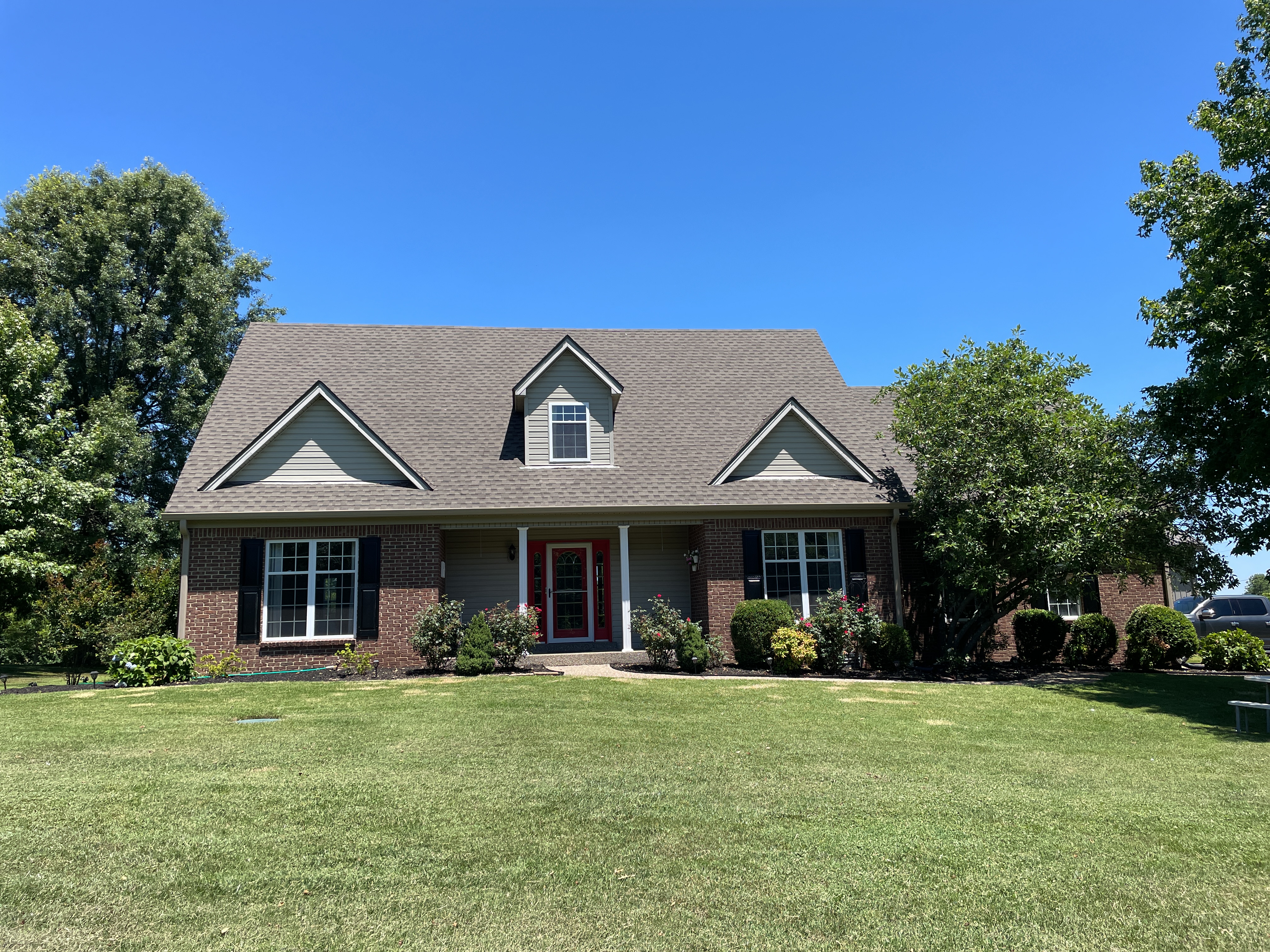

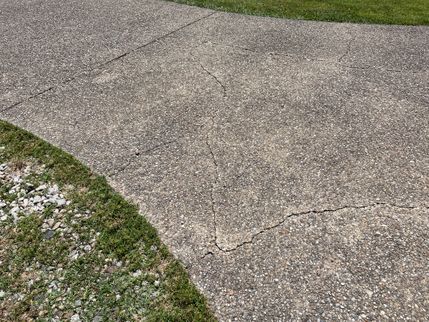
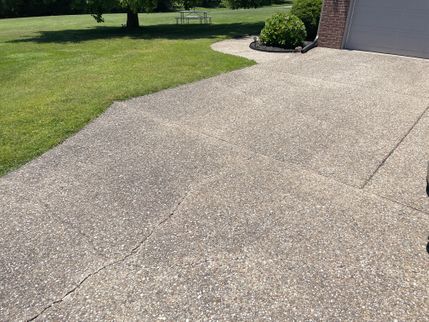
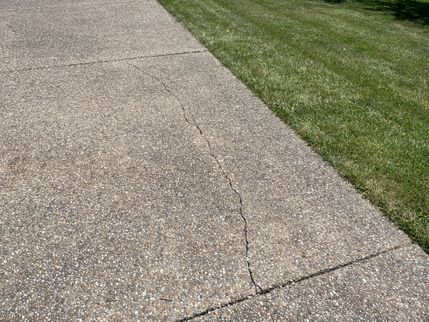

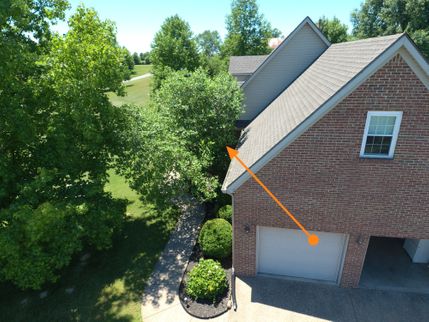
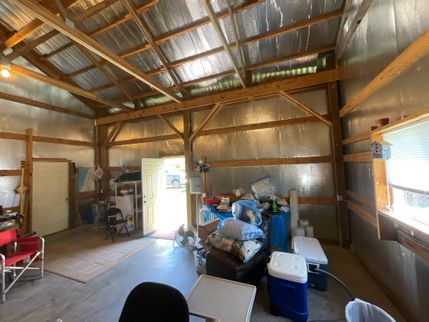


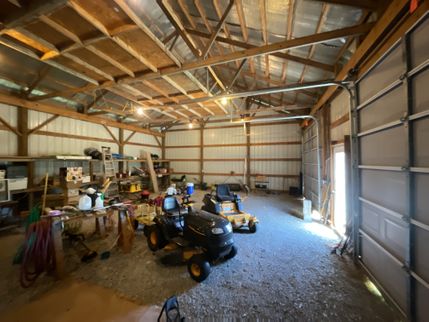
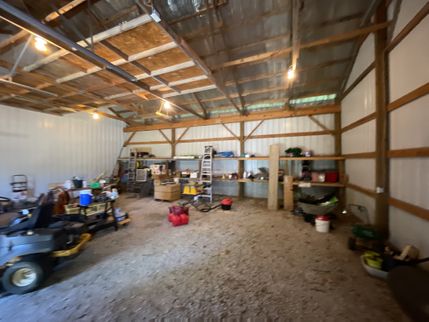
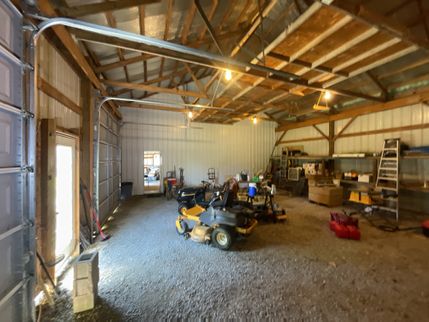
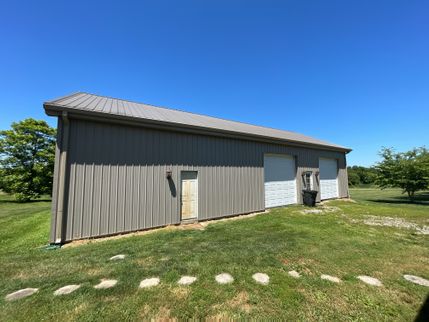

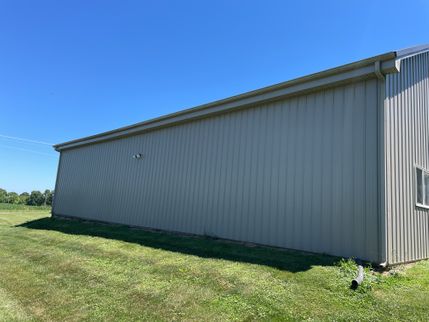

.jpeg)
.jpeg)
.jpeg)
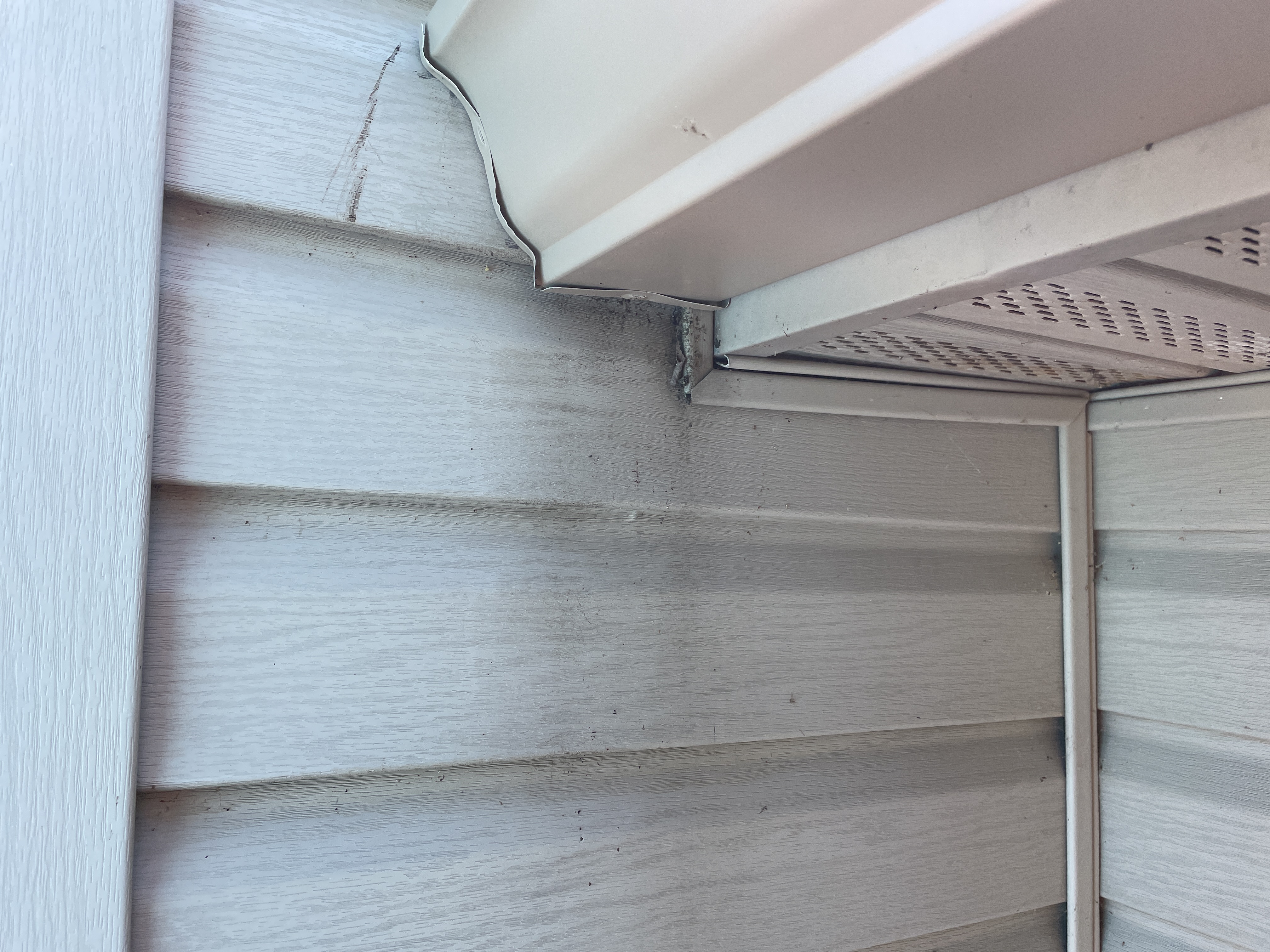
.gif)
